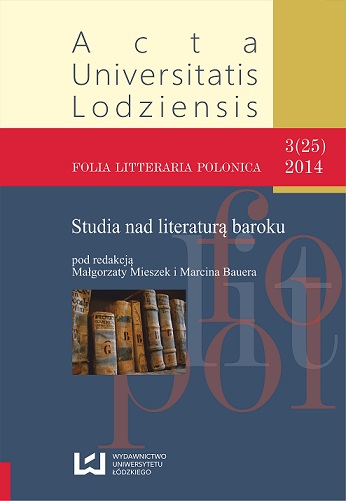„Kto skosztuje, wie, co to za smaki duchowne są”. Obrazowanie o charakterze sensualnym w podręczniku medytacji na przykładzie „Elementarzyka ćwiczenia duchownego” Mikołaja z Mościsk
DOI:
https://doi.org/10.18778/1505-9057.25.05Słowa kluczowe:
Aesthetic-mystical literature, Meditation, Literary stylistic devices, Rhetorical devices, Sensual imagingAbstrakt
The purpose of this article is to present, based on the second part of the Manual of Spiritual Exercise (Elementarzyk ćwiczenia duchownego, Kraków 1626) by Mikołaj of Mościska (1559–1632), the role of stylistic literary devices in the description of meditative mechanisms and the results of this experience — the inner transformation of Man, and the experience of closeness to and unification with God. The author will also draw attention to the significance of senses in the cognitive process, and consequently imagination, enabling one to picture the images contained in metaphors. The category of perceptibility, which is accentuated in the text, served to present objects and phenomena in a “realistic” manner. Thus, focus will be placed on the imaging tools through which the 17th century author attempted to draw metaphysical matters closer to the reader’s senses.
Pobrania
Pobrania
Opublikowane
Jak cytować
Numer
Dział
Licencja

Utwór dostępny jest na licencji Creative Commons Uznanie autorstwa – Użycie niekomercyjne – Bez utworów zależnych 4.0 Międzynarodowe.











